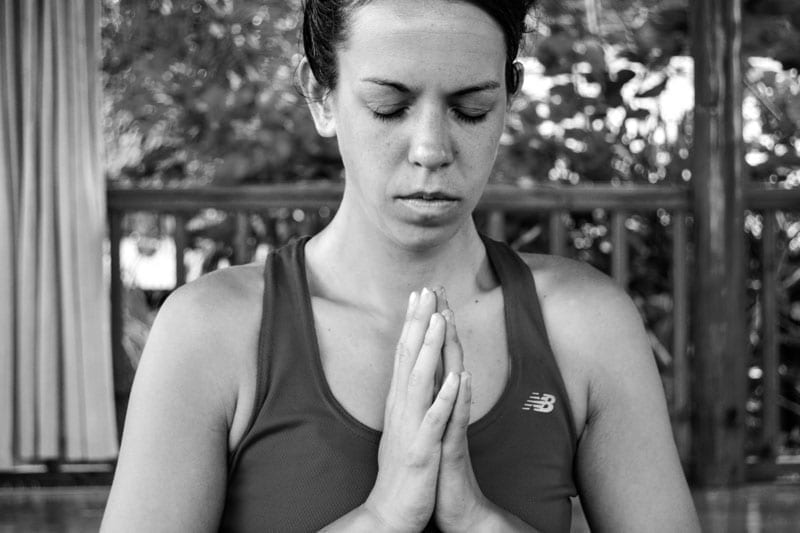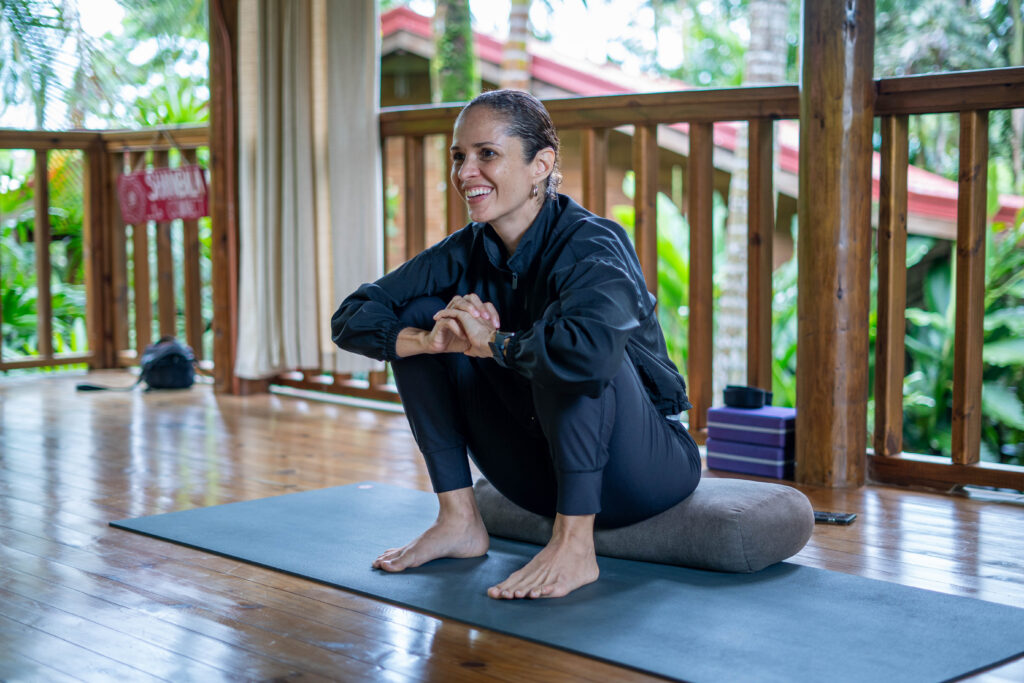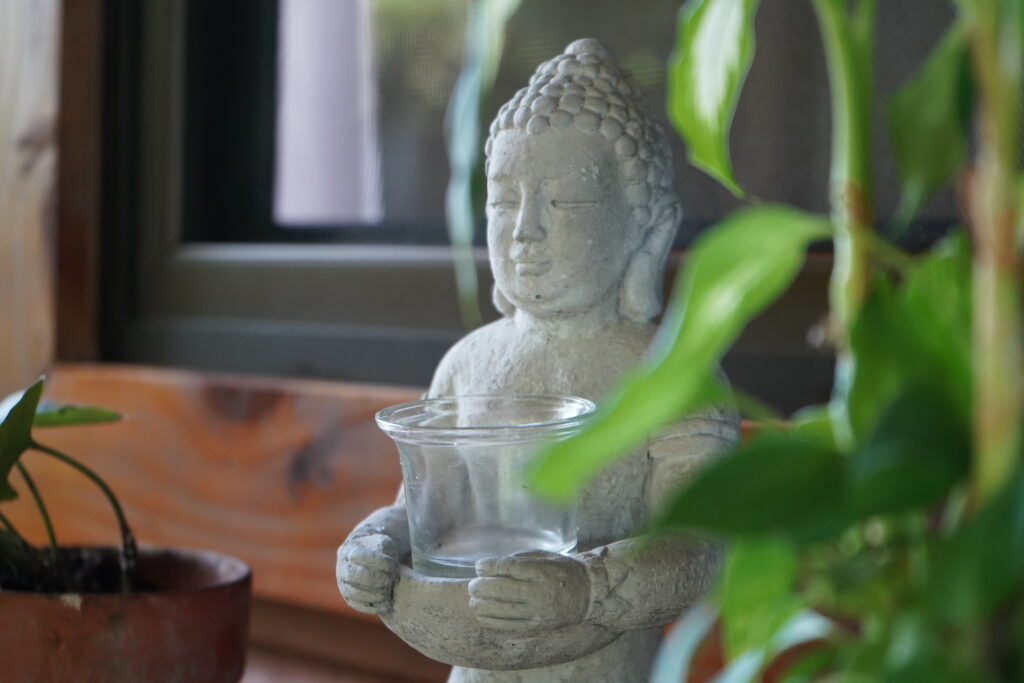This is part four of “Following the Eight-Limbed Path”, a series about Ashtanga yoga, read part three here
Inhale. Exhale. Repeat.
Breathing is something that comes naturally — we breathe without even thinking of it. Controlling the breath is another story; this is where we need to practice. The breathing technique, pranayama, is very important in yoga. This is the fourth limb of Ashtanga yoga, written down in the Yoga Sutras by Patanjali.

Breathing and motion
Pranayama goes hand in hand with the third limb, asana, and these two are considered to be the highest form of purification and self-discipline for the mind and the body, respectively. But how can breathing have such an effect on our health?
When asana and pranayama are working together in harmony, we start to heat up our bodies. This is called tapas, or the inner fire of purification. This heat is a part of the process of purifying the nadis, the subtle nerve channels of the body, which leads to a more healthful state and allows the mind to become calmer.
Practicing and perfecting the breath
When I started practicing yoga I didn’t know much about the breathing. I understood that it was a big part of the practice but not how important it was. My breathing in the beginning was choppy and unstable, it took me a long time to really connect with the breath and hold that through the practice. When I started to focus more on the technique, I also started to feel the power of the breath. I could feel the difference, how it took me deeper into the postures and how it had a calming and soothing effect.
With practice, every inhale and every exhale got longer and more steady. I still struggle to keep that steadiness in certain postures — when the postures are more difficult, my breath seems to pick up speed, and I have to bring back the control by really focusing on the breath. Yet slowly but surely it changed, and all of a sudden one day I could feel the magic. I could understand what people were talking about when they said that the practice was like a moving mediation. I was flowing through the practice with the guidance of my breath.
The breathing helps us to focus and purify our bodies and minds, making it easier for us to eventually calm our minds. This is why the rhythm of the breath is important in the yoga practice. When the inhale is neutralized or joined with the exhale, then perfect relaxation and balance of body activities are realized. When we practice, we try to follow the proper rhythmic patterns of slow deep breathing. These patterns strengthen the respiratory system, soothe the nervous system, and reduce cravings.

A grounding force
As a teenager I saw myself as an active person and remember thinking that yoga wasn’t for me, I couldn’t imagine myself having the patience to sit still and just breathe with my eyes closed; which was basically what I thought of yoga before I tried a few classes. My introduction to yoga happened when I was living in Mexico, and something about the practice really appealed to me at that point in my life. It was something special about the breath connecting with the movement; the physical aspect combined with the importance of being present really caught my attention (and dedication).
I started doing Ashtanga yoga three or four mornings every week. I was learning the sequence the traditional way, through a guided self practice, memorizing the postures and repeating the sequence time after time. With a stiff body and a choppy breath I struggled a lot. But I kept on going; never before had I found something that seemed to make me learn more about myself.
Today it’s a part of my daily routine. This is my meditation, when I move in synchronization with the breath and flow through my practice. This is how I like to ground myself and start the day.
Inhale. Exhale. Repeat.
Read part five of the series here

Your Journey Starts Here
Ready to Finally Experience That Life-Changing Surf + Yoga Trip (Without the Overwhelm)?
Bust the 5 biggest myths about going to a surf and yoga camp so you can stop procrastinating and start catching waves - with our FREE 5-day email course.
Change the heading on the Separator tab ->
Search
Get a Toolkit to Create Calm in Your Inbox
Watch the first lesson from our full immersive course: 8 Limbs of Ashtanga Yoga, FREE!
Change the heading on the Separator tab ->
Most Read Blogs
What is the Meaning of Anjali Mudra?
May 27, 2020
Fitness for Surfers: Workouts, Exercises & Training
February 10, 2022
The Best Places to Eat in Uvita, Costa Rica
May 19, 2022
How to Get From SJO to Costa Ballena, Costa Rica
May 31, 2018
Change the heading on the Separator tab ->
Categories
Categories
- Bodysurfing (5)
- Food (8)
- Responsible Business (7)
- Surfing (68)
- Travel (67)
- Yoga (45)
Change the heading on the Separator tab ->
Newsletter
Thanks for subscribing! Please check your email for further instructions.
Change the heading on the Separator tab ->
Follow Us
Bodhi Surf + Yoga
Change the heading on the Separator tab ->
Read more
Pilar’s Ayurveda Exploration: Bringing Ayurveda Home
Words by Pilar
We’re thrilled to have you join us for the fourth of Pilar’s Ayurveda series blogs! We’ve already learned so much about Ayurveda – the ancient science of life. In Pilar’s last three…
Ayurveda Series – Cooking with Prana
Words by Pilar
Welcome back! We’re thrilled that you’ve decided to join us as we dive into our third blog in Pilar’s discovering Ayurveda series – Cooking with Prana. Just to jog your memory, Pilar…
Agni – Ayurveda’s Most Vital and Dynamic Principle
Words by Pilar
What if we told you that you could change your life by reading just one blog post? While that might be a bit far fetched, we’re convinced that we could all benefit…



